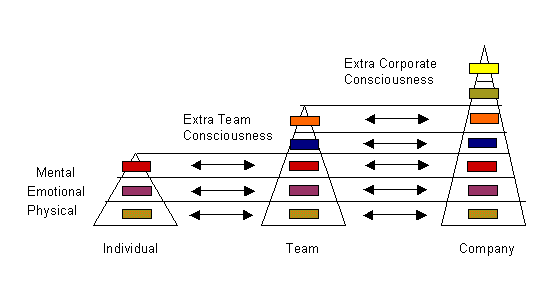The next metapattern studied by Tyler Volk and Jeff Bloom are Holarchies, a word coined by Arthur Koestler in The Ghost in the Machine, from a combination of the greek words "holos", meaning "whole", and "hierarchy". It is a hierarchically organized structure of units or entities that are called 'Holons' and "Clonons", elements which are both parts of a system and "wholes", useful to describe highly complex systems. A system or organization which has in its structure (or meta-structure) some holarchies it is also called holonomic or holonic.
Background
A holarchy is a nested system of layers in which the units (wholes) within one layer are parts for the wholes in the next larger, encompassing layer. Holarchic layers can be used to describe certain types of social, political, and institutional organizations, as well as structures in science and other disciplines. In holarchies the wholes at each level have particular kinds of relationships with the other wholes on that same level, and these relationships change as we move up the nested layers from physics to organisms to social systems. The relationships between layers in holarchies tend to be ambiguous and more difficult to describe.
Examples
- In science: rose flowers, the Earth and atmosphere, atoms, bodies of organisms, holarchic layers of complexity in organisms (from DNA/RNA components to the whole), solar system, galaxies, etc.
- In architecture and design: some building and community designs, etc.
- In art: forms as depicted, etc.
- In social sciences: communities (as described by Jean Lave and Etienne Wenger), many tribal societies, democracy in its purest form, etc.
- In other senses: mandalas, apprenticeships, etc.
 |
| © copyright 2012 Marshall Clemens - Idiagram |
 |
| Example of holonic organization evolution in holarchic structures increasingly complex. |
 |
| Example of an holonic organization community represented as a strategic map: Lawrence Boys and Girls Club © copyright 2012 Marshall Clemens - Idiagram |
 |
| Complex adaptive system model. The evolution of the system from initial to final components, from left to right, is ruled by a central rule system organized as holarchy. © copyright 2012 Marshall Clemens - Idiagram - NECSI |



























No comments:
Post a Comment
Note: Only a member of this blog may post a comment.